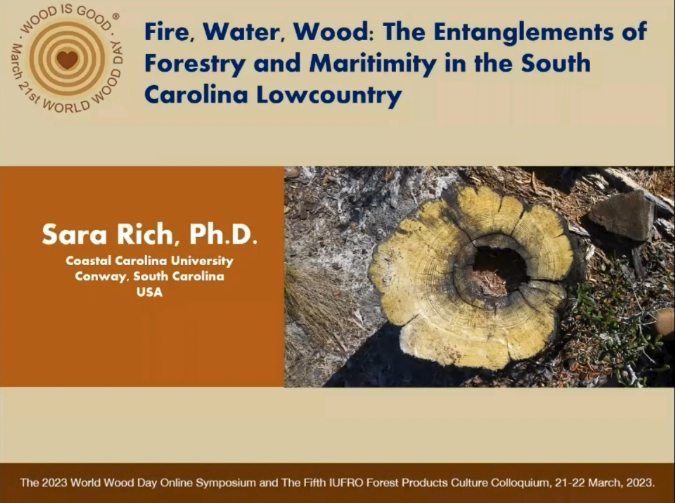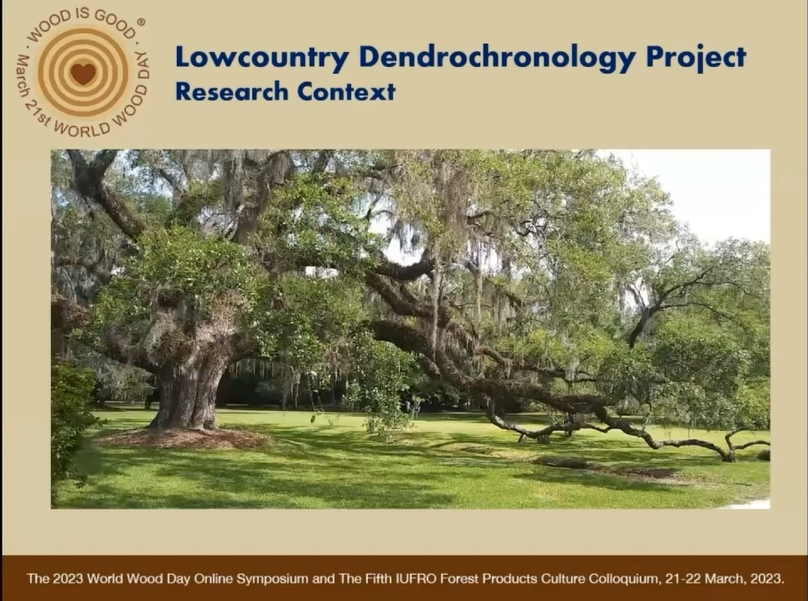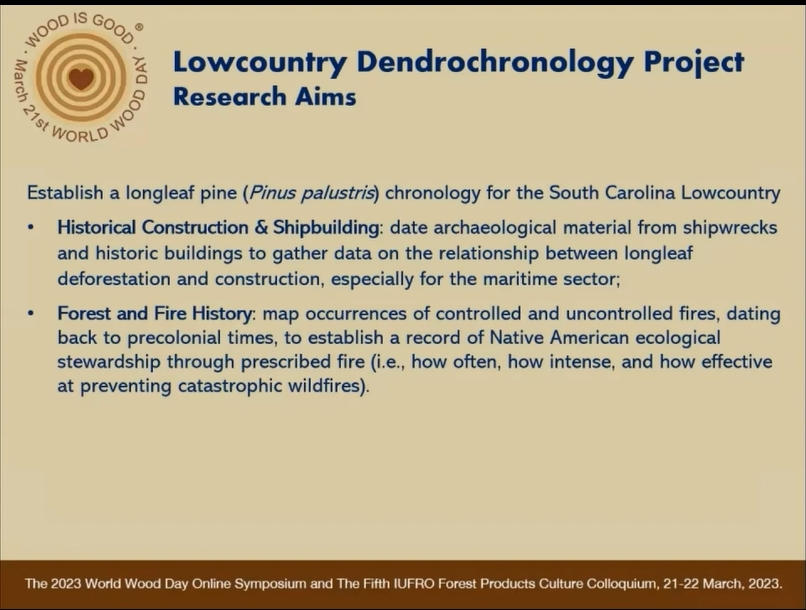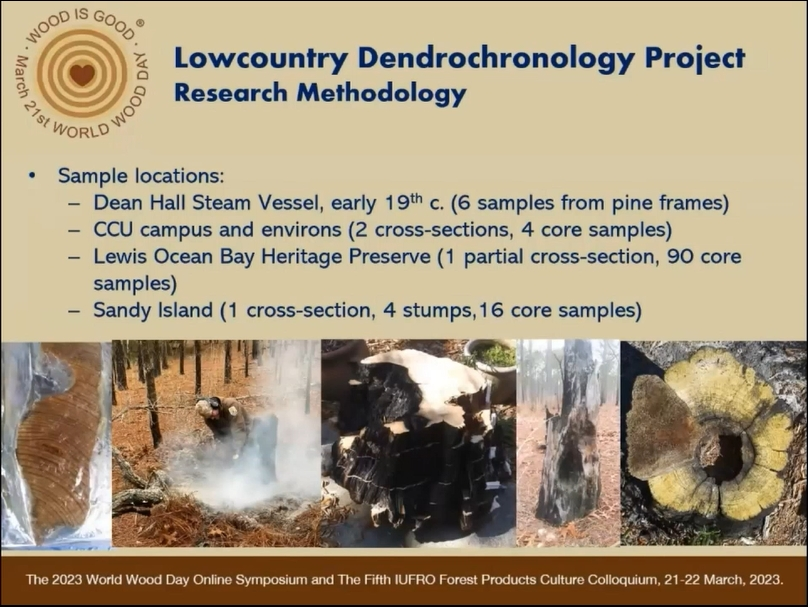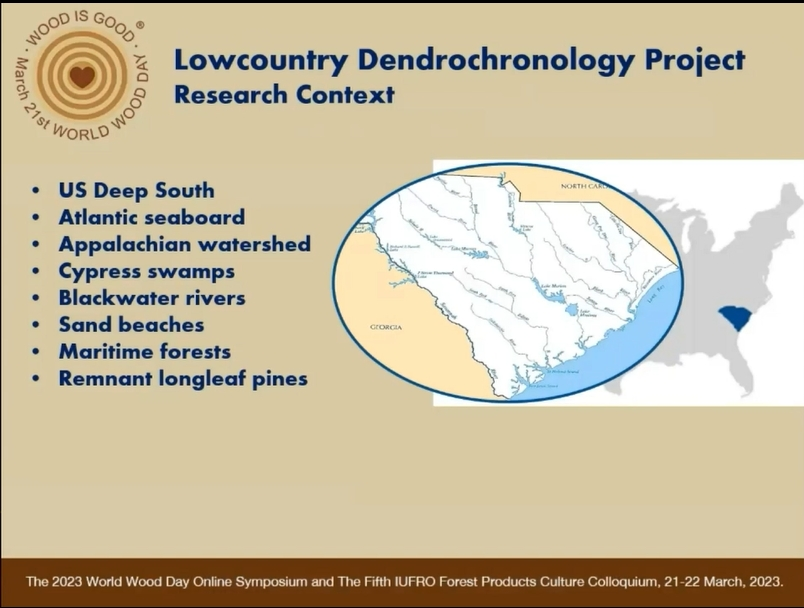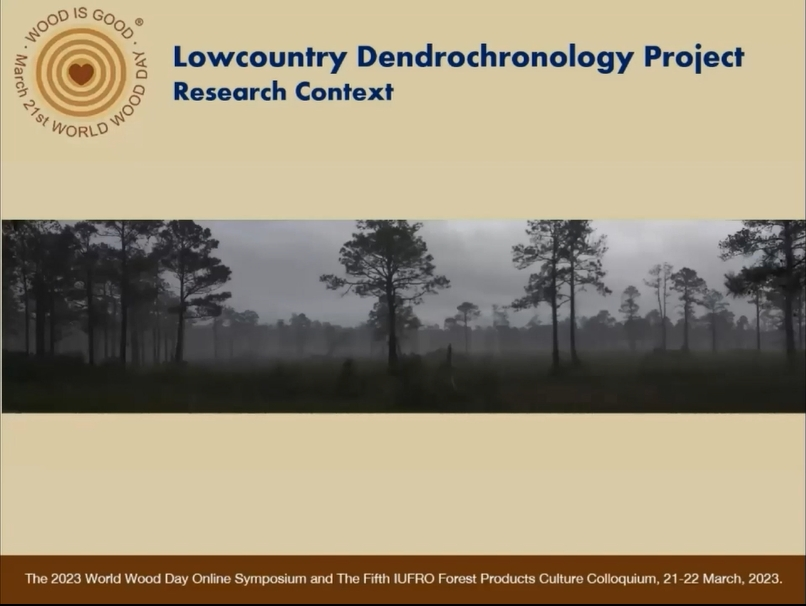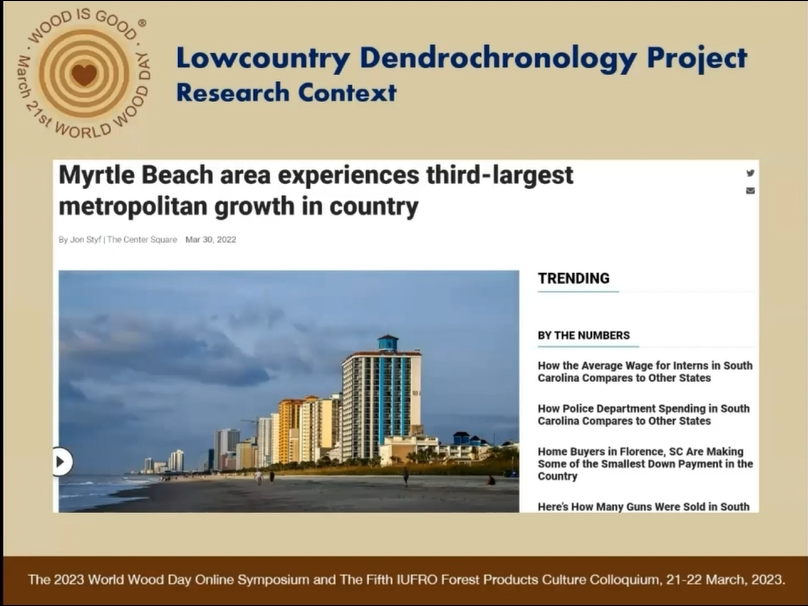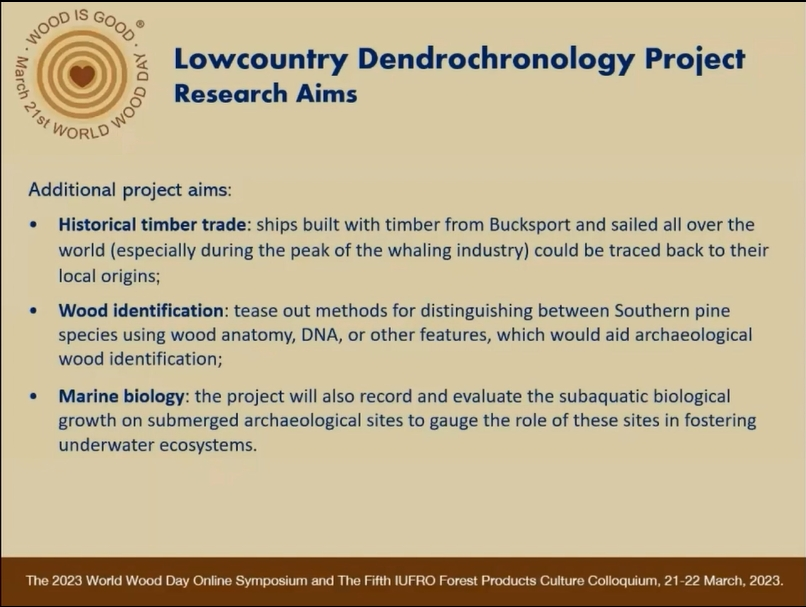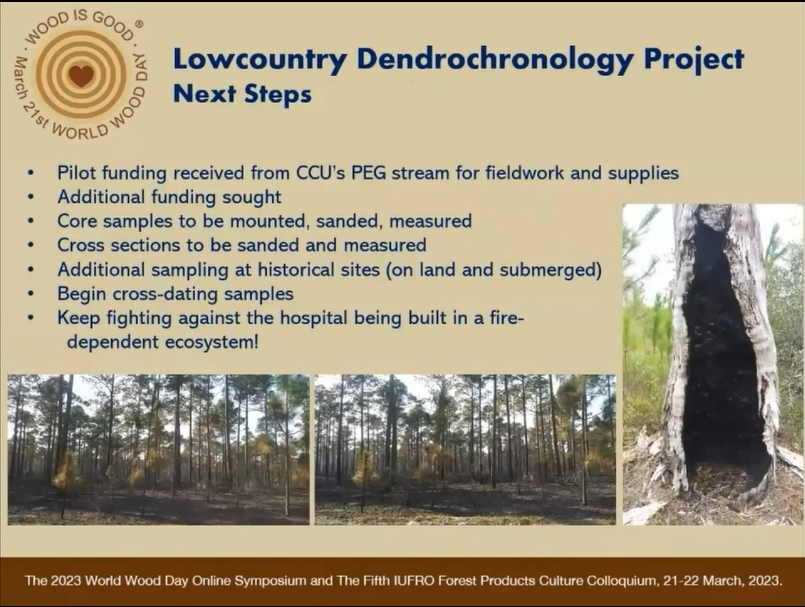会议名称:2023世界木材日研讨会暨第五届国际林联(IUFRO)林产品文化研究组讨论会
会议时间:2023年3月22日
报告嘉宾:Sara Rich
嘉宾简介: 美国卡罗来纳海岸大学 副教授
摘要:
The Lowcountry of South Carolina is defined by cypress swamps and blackwater rivers that flow into the west Atlantic Ocean. Higher ground had been graced by longleaf pine forests, a unique fire-dependent ecosystem, until the arrival of European settlers who felled 97% of these forests for agricultural and architectural – especially shipbuilding – projects. Timber barons replanted longleaf with faster-growing loblolly pines. The prescribed burning to maintain longleaf ecosystems, practiced for millennia by the ancestors of the Waccamaw Indian People, ceased and would only resume centuries later as standard wetland forestry practice. As urban development continues unchecked in this area, fire-dependent ecosystems are again threatened. By collecting samples of long-lived pines, especially remnant longleaf, this project aims to construct a local tree-ring chronology to inform the fire history of this area and advocate for the continued use of controlled burning to maintain fire-dependent ecosystems amidst increasing urbanization. At the same time, the project aims to establish a reference chronology for local pines, which can be used to date and provenance archaeological features, such as wrecked ships constructed with local pine.
It is well known that 19th c. shipbuilding devastated local longleaf forests, but archaeometric analyses of the material remains of those ships can provide a porthole into the ontological status of the forests from which they were built, and how their original ecosystems were shaped by prescribed fire. This paper presents preliminary data on this project, but ultimately, it echoes Michael Shanks (2012) who claims that in the Anthropocene, all scientific research is archaeology. With this position in mind, this paper also aims to challenge the usual equation of material culture with artifacts, and asserts that fire scars in tree rings and entire landscapes defined by controlled burning, in addition to the usual shipwrecks and maritime archives, must also be considered as studies of material culture and what constitutes ‘heritage’.
Fire, Water, Wood: The Entanglements of Forestry and Maritimity in the South Carolina Lowcountry
 1,453
1,453
责任编辑:iwcs25H


